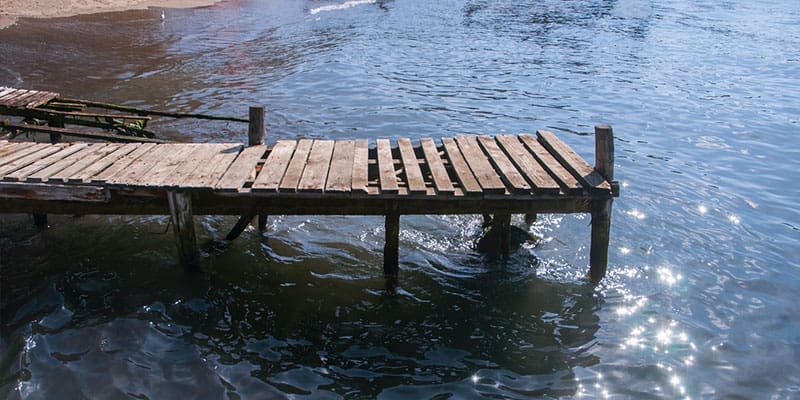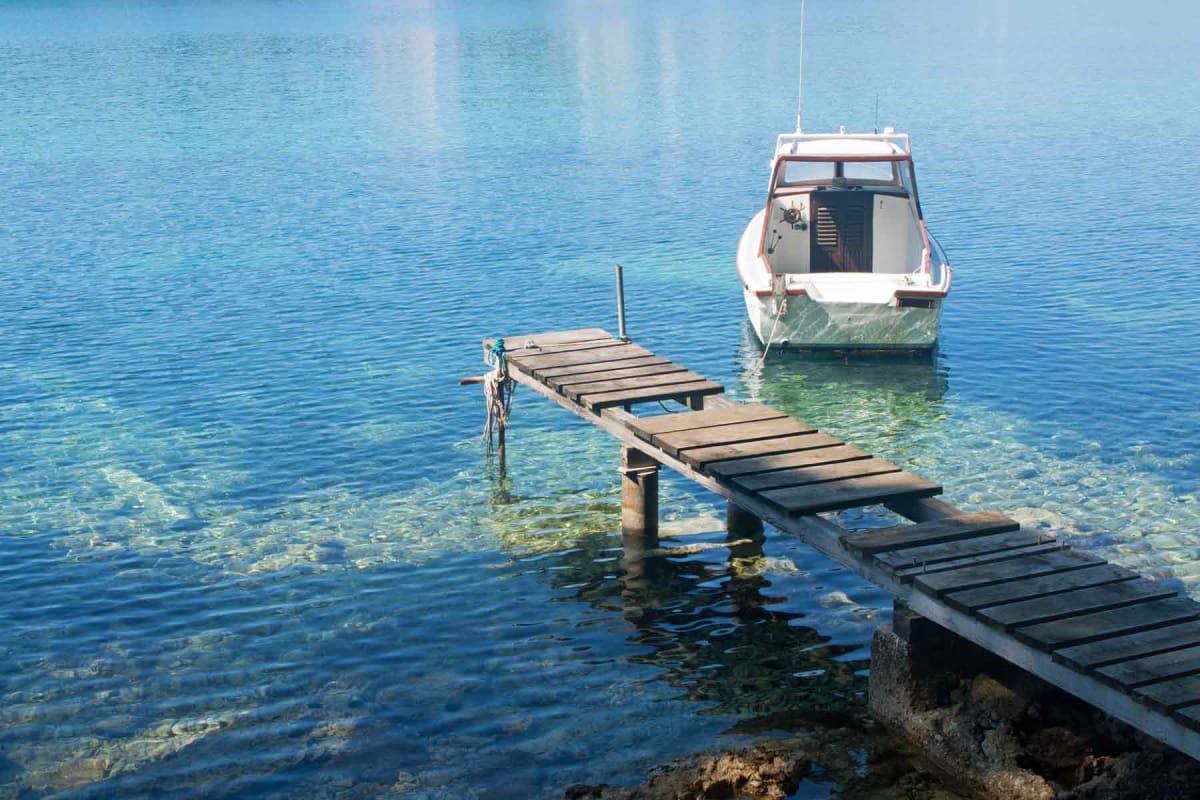The Value of Timely Dock Repairs for Waterside Safety
Wiki Article
Effective Dock Fixing Techniques: Ensuring Architectural Stability
Making certain the architectural honesty of docks through effective repair work strategies is critical for the longevity and security of aquatic centers. This entails a multi-faceted technique beginning with thorough examinations using sophisticated technologies like finder equipment and remotely operated lorries (ROVs) to discover both visible and hid damages. Consequently, choosing the best repair service products, such as corrosion-resistant alloys and composite materials, is critical for durability. Structural reinforcement approaches, consisting of the implementation of cross-bracing systems and load-distribution plates, play a crucial role in mitigating stress points. Nonetheless, the significance of these methods becomes apparent when discovering advanced repair approaches and preventative maintenance strategies.Examining Dock Damage
Evaluating dock damages is a critical initial action in guaranteeing the architectural stability and safety and security of any kind of docking center. Key aspects to examine include the dock's foundation, pilings, decking, and equipment (Dock Repairs).Structural designers or qualified assessors generally carry out these assessments utilizing specialized strategies and tools. For circumstances, underwater inspections might use finder equipment or remotely ran lorries (ROVs) to spot immersed damages. Over water, aesthetic inspections are complemented by utilizing wetness meters and various other diagnostic tools to uncover underlying problems not immediately visible to the naked eye.
Finding Repair Service Materials
Selecting the ideal repair service products is a critical action in the dock reconstruction procedure, one that directly affects the durability and efficiency of the fixed structure. Product selection should be driven by elements such as ecological conditions, load-bearing demands, and compatibility with existing dock elements.Along with timber, composite materials are increasingly prominent due to their resilience and low maintenance needs. Compounds, normally made from a mix of plastic and timber fibers, use outstanding resistance to rot, insects, and UV damage. For metal docks, choosing corrosion-resistant alloys such as galvanized steel or marine-grade light weight aluminum is vital to stop rust and guarantee structural honesty in saline water problems.
Epoxy materials and marine-grade sealers are important for fixing cracks and securing joints, supplying a water-proof barrier and boosting the dock's overall toughness. By carefully choosing top quality materials, dock repair services can accomplish long-lasting results, consequently safeguarding against future degradation and guaranteeing risk-free, dependable use.
Structural Reinforcement Methods
Reliable architectural reinforcement strategies are vital in ensuring the stability and longevity of dock fixings. One essential method involves using steel or composite reinforcement bars (rebar) within concrete structures. Rebar supplies additional tensile strength, avoiding fractures and distributing loads much more uniformly. This method is specifically efficient for docks exposed to hefty tons or severe environmental conditions.One more important method is the application of fiber-reinforced polymers (FRP) These materials offer high strength-to-weight ratios and superb resistance to corrosion, making them perfect for reinforcing wooden or concrete docks. FRP can be applied in strips or sheets and adhered with epoxy materials to enhance structural honesty.
Supporting and securing systems additionally play a critical function in architectural reinforcement. Cross-bracing, utilizing metal or wooden light beams, can counteract side forces, lowering guiding and movement. Anchoring systems, such as helical piers or driven stacks, provide a stable structure by transferring loads to much deeper, more stable dirt layers.
Finally, the assimilation of load-distribution plates can help distribute weight a lot more equally across the dock's surface area, reducing localized anxiety factors. These methods collectively ensure that anchors stay safe and robust, with the ability of enduring the rigors of their operational atmosphere.
Advanced Repair Service Approaches

Another advanced strategy includes underwater welding, which permits repair services to be carried out without the requirement to dewater the area. This method is especially advantageous for attending to structural problems in immersed dock parts, ensuring minimal disturbance to operations. Improved welding strategies, paired with robot systems, supply accuracy and dependability, consequently expanding the lifespan of the dock.
Furthermore, cathodic defense systems are applied to stop corrosion in metallic dock structures. By utilizing sacrificial anodes or satisfied present systems, these methods properly alleviate the electrochemical processes that result in material degeneration.
Finally, progressed tracking innovations, such as architectural health and wellness monitoring (SHM) systems, provide real-time information on the condition of dock structures. These systems make it possible for positive maintenance and prompt treatments, ultimately making sure the see this page long-lasting structural stability of the dock.
Upkeep and Avoidance
Upkeep and avoidance are essential ideas that underpin the longevity and security of dock structures. Normal inspections are paramount, enabling for early detection of damage, possible weak points, and ecological influences. An aggressive strategy, involving regular checks for deterioration, rot, and structural changes, minimizes pricey fixings and extends the dock's functional life.Preventive steps should include applying protective layers to metal components to secure versus rust and using treated wood to stand up to degeneration. Furthermore, making certain proper water drainage and ventilation can prevent water build-up, which is a typical reason for architectural destruction. Incorporating high quality products and adhering to supplier guidelines during construction and repair service phases likewise play critical duties in boosting sturdiness.

Training workers in dock maintenance ideal methods guarantees constant application of preventative steps. Leveraging technological advances, such as drones for evaluations and sensing units for real-time surveillance, can additionally boost maintenance initiatives. By prioritizing upkeep and prevention, dock owners i thought about this can guarantee architectural integrity, functional security, and cost-efficient management over the dock's life-span.
Conclusion
To conclude, maintaining the structural stability of aquatic facilities necessitates extensive dock fixing techniques. Thorough examinations making use of sophisticated devices discover both visible and hid damages, while the selection of suitable repair service products improves durability. Executing structural support techniques addresses stress factors successfully. Advanced repair service methods, paired with regular upkeep methods, make certain the dock remains operational and safe under diverse ecological conditions. Taking on these methods substantially lengthens the lifespan and functionality of marine facilities.Making certain the architectural integrity of docks via effective fixing methods is paramount for the longevity and safety of aquatic centers.Picking the ideal repair service products is a pivotal step in the dock restoration procedure, one that directly influences the durability and efficiency of the repaired framework.Reliable structural support methods are essential in making certain the stability and longevity of dock repair work. By focusing on upkeep and prevention, dock owners can make certain architectural integrity, functional security, and affordable management over the dock's life-span.
In verdict, preserving the architectural stability of marine resource centers necessitates thorough dock repair service methods.
Report this wiki page